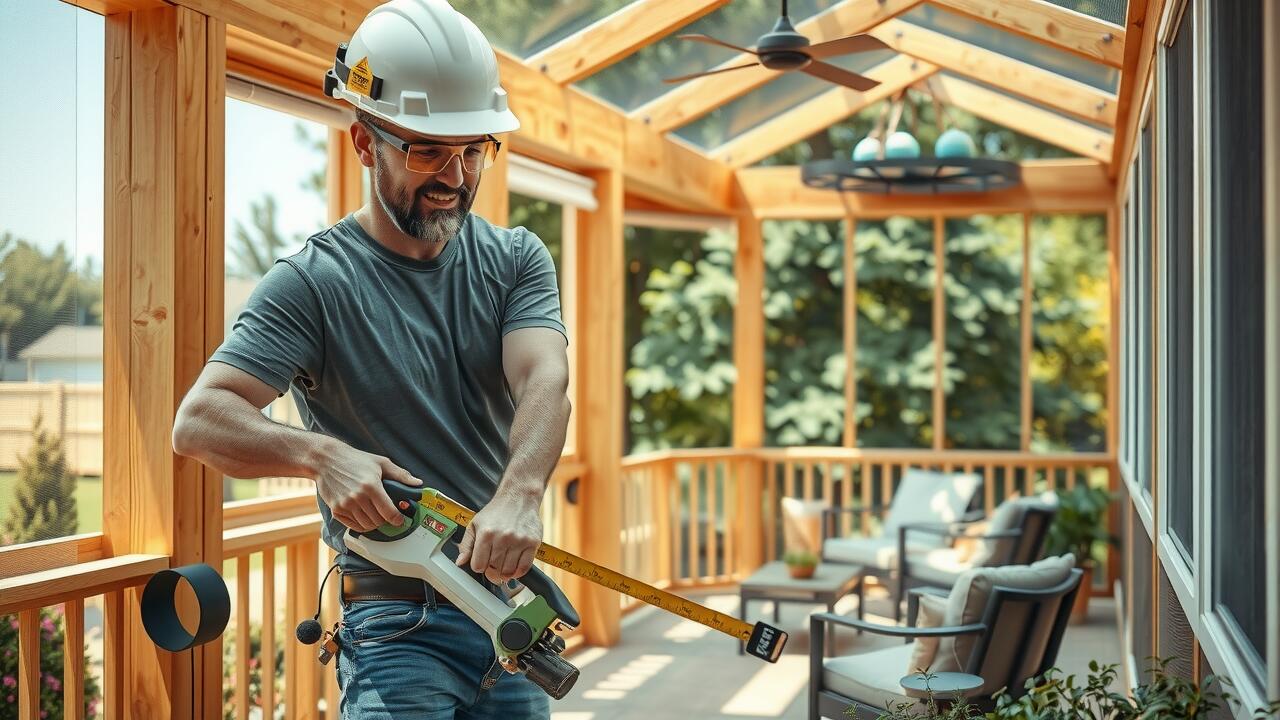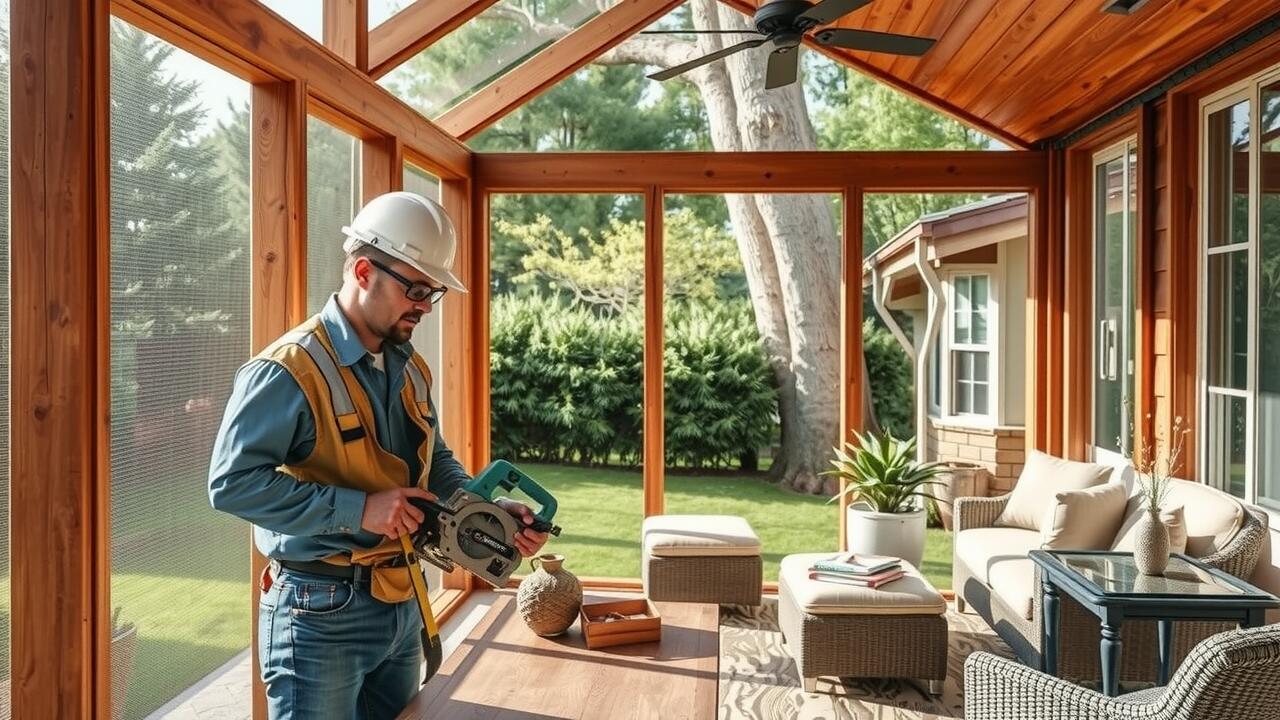
Maintenance Tips to Extend Lifespan
Regular maintenance is essential for extending the lifespan of a screened-in porch. Keeping the screens clean not only enhances visibility but also prevents rust and corrosion. Use a soft cloth or sponge with mild soap to wipe down the screens. Inspect the frames for any signs of wear or damage, and promptly address any issues to avoid larger problems later.
Weatherproofing the screened-in porch can also contribute to its longevity. Ensure that the frame is securely fastened and that caulk is applied where necessary to prevent moisture from seeping in. During the off-season, consider adding protective covers to shield the screens from extreme weather conditions. This proactive approach can help maintain the aesthetics and structural integrity of the porch while reducing the need for extensive repairs down the line.
Simple Upkeep Practices for Screened Porches
Maintaining a screened-in porch is essential for its longevity and comfort. Regular cleaning is necessary to remove dust, dirt, and debris that can accumulate on the screens and flooring. A simple solution of mild soap and water works well for washing surfaces. Address any tears or damaged screens promptly to prevent pests from entering the space, ensuring that any repairs blend seamlessly with the existing structure.
Inspecting the wooden parts of the screened-in porch is also crucial, as they can be vulnerable to rot and weathering. Applying a protective sealant every few years can help preserve the wood and enhance its durability. Keeping an eye on the paint and stain is equally important; touch up any faded areas to maintain a cohesive look. Seasonal checks can ensure that everything remains in good condition, allowing for enjoyable use throughout the year.
Local Regulations and Considerations
Local regulations play a crucial role in determining how you can construct a screened-in porch. Before embarking on your project, it’s essential to check with your local zoning office. Many areas have specific codes regarding setbacks, height restrictions, and the materials you can use. Understanding these regulations can save you from potential fines or the need to make costly modifications later.
In addition to zoning restrictions, some homeowners associations (HOAs) may have their own rules about modifications to your property. These guidelines can dictate aesthetics and may even limit the type or color of screens you use. Confirming these details early in the planning process ensures that your screened-in porch project aligns with community standards and avoids any disputes.
Checking Zoning Laws for Screening Projects
Before starting your screened-in porch project, it’s essential to understand local zoning laws and regulations. Many neighborhoods have specific guidelines governing home alterations, including the addition of structures like porches. Checking with your local zoning office or reviewing community regulations can help you avoid potential fines or the need for costly modifications later on.
Homeowners should also consider any homeowner association (HOA) rules that may apply. These rules can vary significantly from one community to another, often detailing permitted materials, height restrictions, and aesthetic considerations. Ensuring compliance with these regulations helps maintain the overall visual harmony of the neighborhood while avoiding disputes with neighbors or the HOA.
Seasonal Promotions and Discounts
Purchasing materials for a screened-in porch can significantly impact your overall budget. Many home improvement stores offer seasonal promotions that align with peak building seasons. Notably, spring and early summer are popular times for outdoor projects, making it easier to find discounts on screening materials, wood, and tools. By keeping an eye on advertisements and flyers, you can snag great deals that may lower your costs considerably.
Timing your purchases can also lead to substantial savings. Late summer and fall might not seem like optimal times for constructing a screened-in porch, but many retailers discount their inventory to prepare for colder months. Purchasing materials when demand is low allows you to take advantage of clearances and reduced prices. Additionally, online retailers often have flash sales or coupon codes that could provide further discounts, making it an ideal time to stock up on supplies.
When to Purchase Screening Materials for the Best Price
Timing can significantly affect the overall cost of screening materials. Many home improvement stores and online retailers hold seasonal sales, particularly during the spring and summer months when porch renovations are most popular. This is the ideal time to look for deals on screens, frames, and other essential supplies for your screened-in porch. Waiting until demand peaks can lead to higher prices, making early purchase decisions beneficial for your budget.
Another strategy involves observing local clearance events and promotions. Contractors and suppliers often want to clear stock at the end of the season and could offer substantial discounts on leftover materials. Keeping an eye on local listings can help you snag quality items at reduced prices, providing an economical option for enhancing your screened-in porch without compromising on quality.
FAQS
What is the cheapest material to use for screening in a porch?
The cheapest material for screening a porch is typically fiberglass screen mesh, as it is affordable, durable, and easy to install.
Can I use old windows to screen in my porch?
Yes, using old windows is a cost-effective way to screen in a porch. This method can provide a sturdy barrier and also adds character to the space.
Are there any DIY options for screening in a porch?
Absolutely! Many homeowners opt for DIY methods such as using screen rolls or repurposing materials like old doors or windows for a budget-friendly screening solution.
How can I find discounts on screening materials?
Look for seasonal promotions at local hardware stores, check online marketplaces, or consider purchasing in bulk to take advantage of discounts on screening materials.
What local regulations should I consider before screening in my porch?
It’s important to check your local zoning laws and building codes, as some areas may have restrictions or require permits for screening projects.
